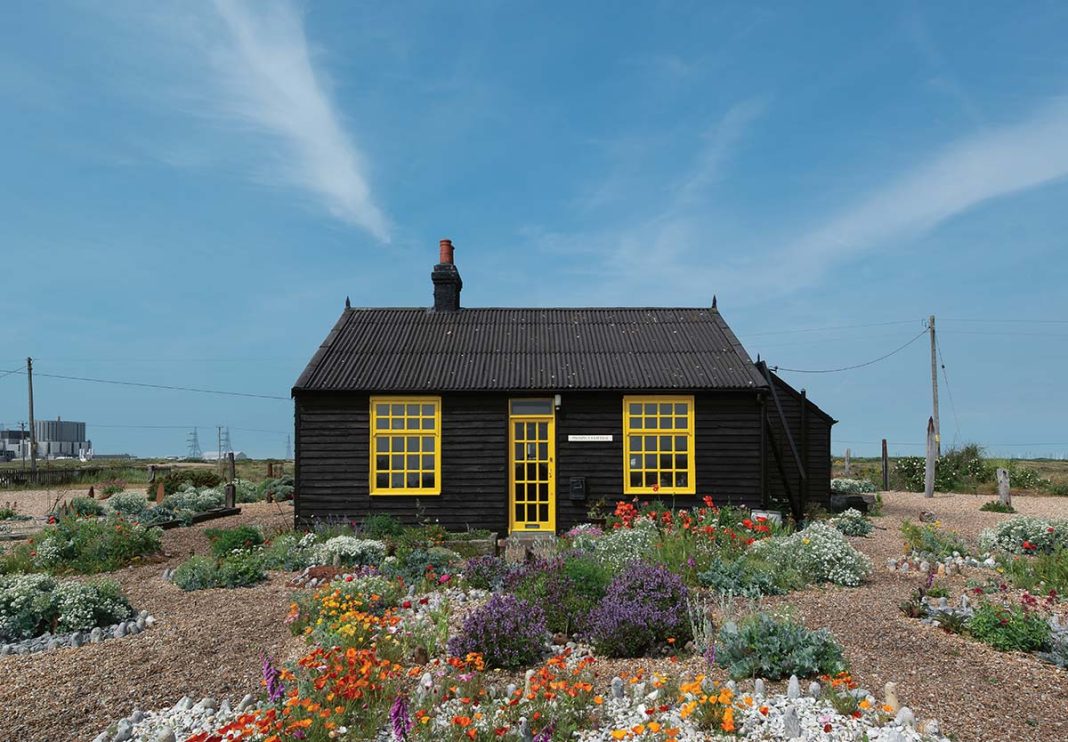Thirty years after his death, we at last have the chance to peek into Derek Jarman’s instantly-recognisable home on the Kent coast
In the shadow of a nuclear power station, on a desert of shingles, sits a fisherman’s cottage with bright yellow windows. If you know anything of Derek Jarman – filmmaker, poet, gay rights activist – this somewhat bleak backdrop in the hamlet of Dungeness on the Kent coast will make sense.
Acquainted or otherwise, allow Gilbert McCarragher’s new book to grant entry, for the very first time, to his sanctuary, Prospect Cottage.
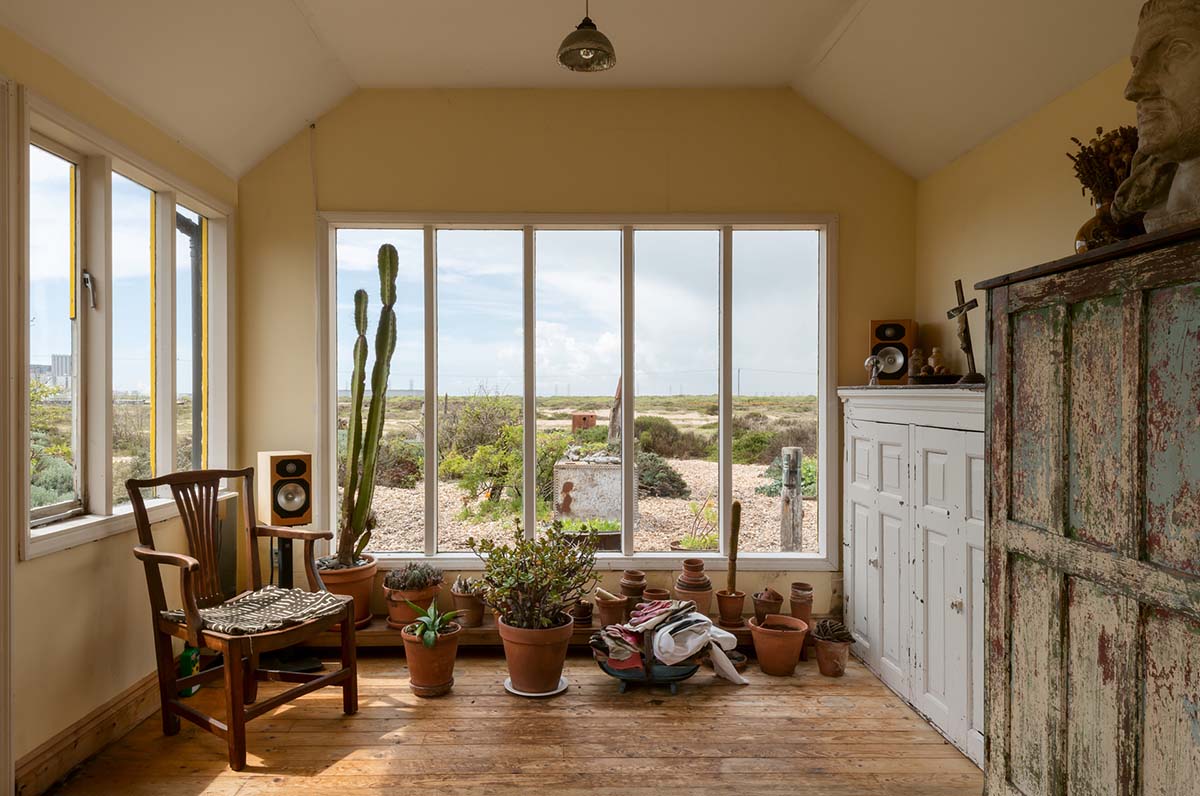
Derek Jarman died of an AIDS-related illness in 1994 and was survived by his long-term companion Keith Collins. The two shared a relationship easily recognised by the queer community: not sexual, but full of love and reciprocal devotion.
It was Keith who cared for Jarman as his health failed, and Keith who was the caretaker of Prospect Cottage until his own death in 2018.
“I first moved to Dungeness in 2008,” says Gilbert. “I never knew Jarman, but Keith would pop round for tea, come to barbecues on the estate, things like that. Jarman lived in Dungeness for about eight years before he died, and then Keith continued to live there for a further 24 years.”
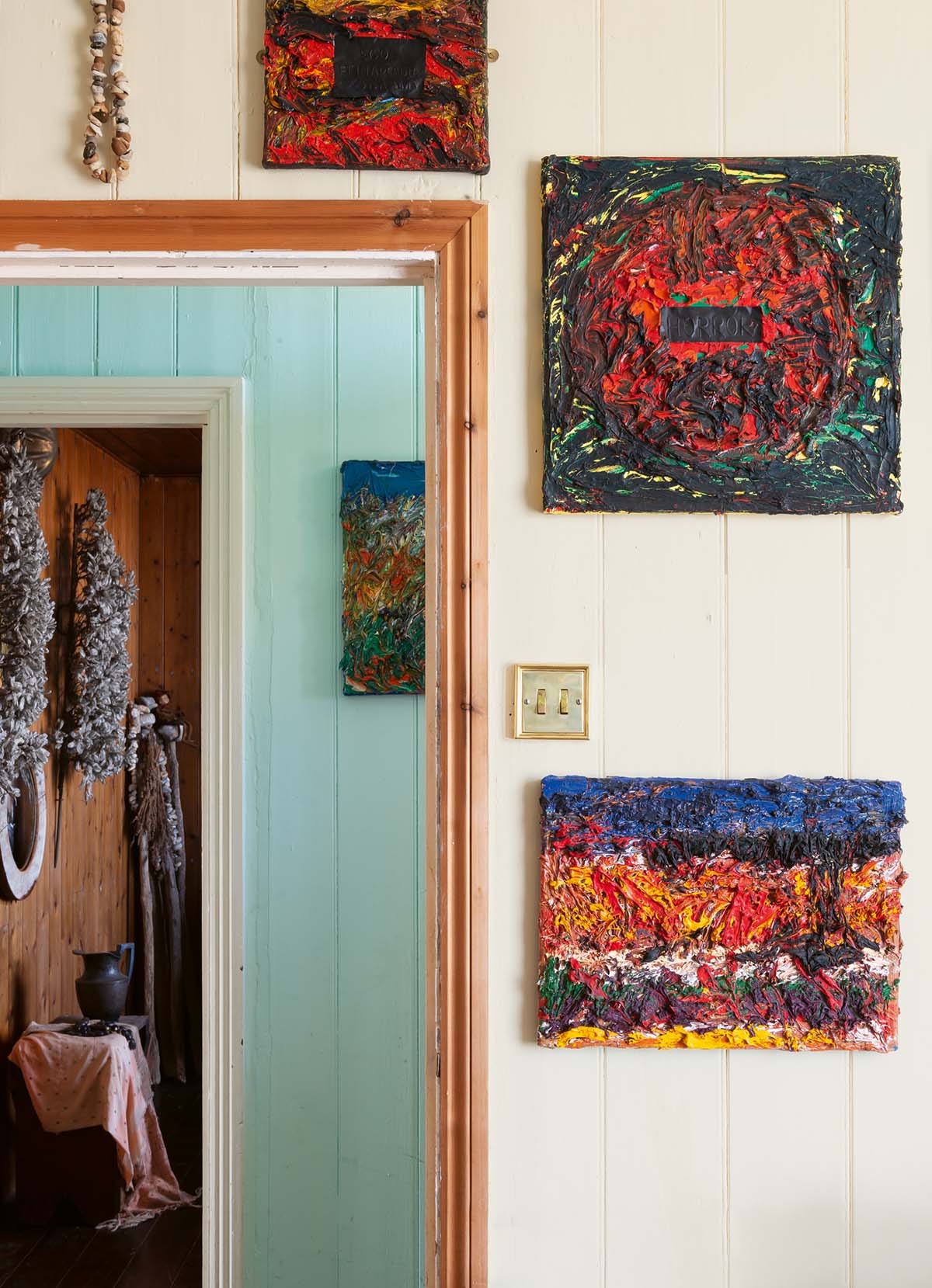
Keith was a respected member of the Dungeness community and well liked. “It was so sad when the news came out that he had this terrible brain tumour,” says Gilbert. “Then, lots of questions started to arise about what was going to happen with Prospect. I was asked to go in and document the house, just a few weeks after Keith became unwell. I started photographing while he was still alive. The book is the result of that process.”
Gilbert’s book, Prospect Cottage: Derek Jarman’s House, is a glorious record of life within the walls of the cottage, and beyond. The surrounding garden has been open to visitors for years. “The garden that Jarman created is probably a smaller version of the overall Dungeness estate,” Gilbert explains.
“It has these uprights, these sentinels, in the garden which he had installed. I think the first one he created was this piece of driftwood which was erected to protect a dogwood plant, to give it some shelter and shade. I think that’s really the key to this, and to the book itself: the notion of things looking after one another.”
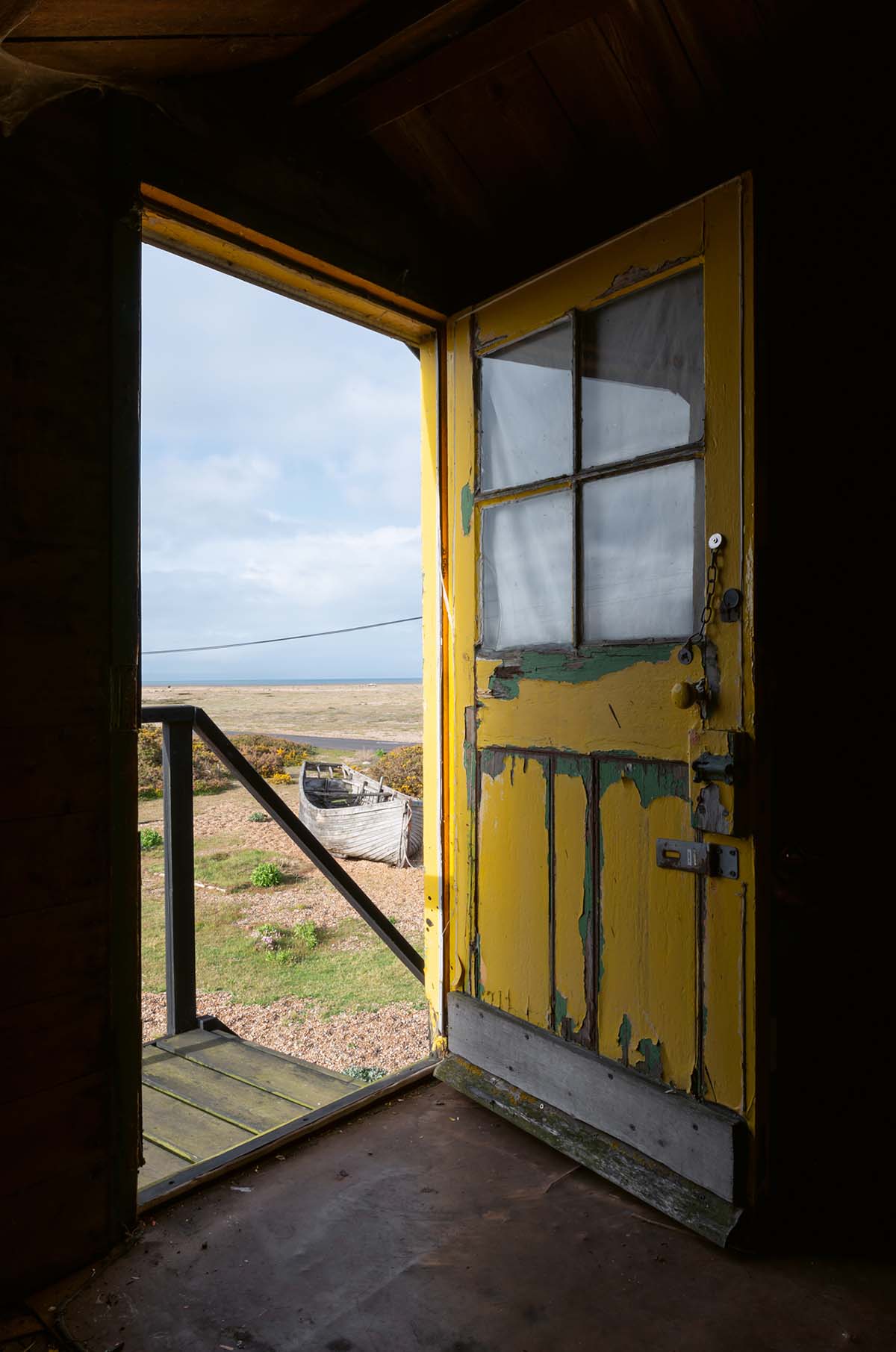
While Keith was at Prospect, net curtains hung in the windows and hand-written signs beseeched visitors not to peer into the cottage. “Look, I’m not innocent,” laughs Gilbert.
“When I was an art student, I’m sure my nose was pressed against the glass as well. That’s why this book exists: everybody wanted to know what lay behind those iconic yellow-framed windows.”
Prospect Cottage: Derek Jarman’s love letter to Keith
Inside, art and love fill every room. “I think Prospect was a love letter. Littered around the house are notes to Keith – well, to HB [Hinney Beast], which was Jarman’s affectionate nickname for him,” smiles Gilbert.
“There are so many sensitive little moments in the house, like in the bedroom, where a big pair of boots are placed beside a smaller pair of shoes. There’s lovely poetry and symmetry of pairings throughout the house. It’s hard not to read into those things.”
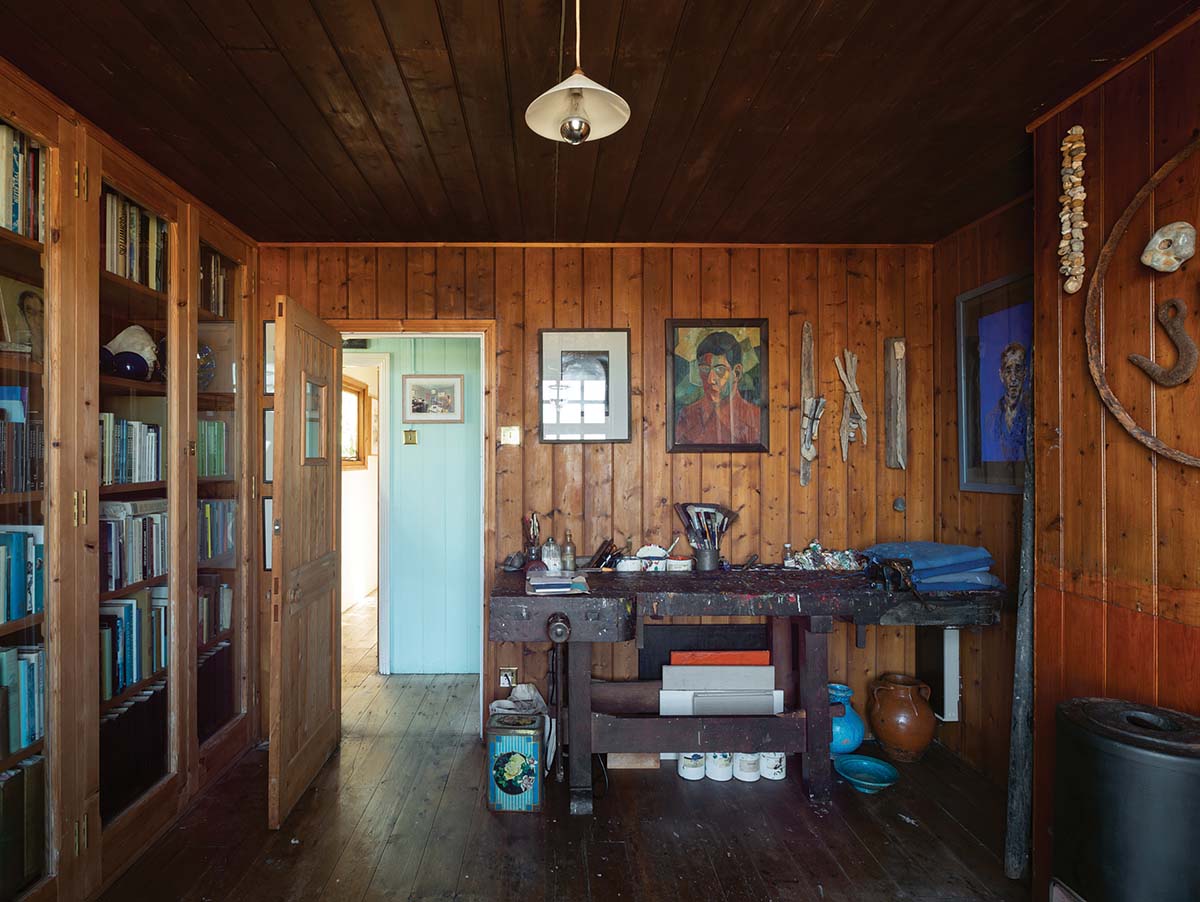
One such pairing lies in the studio, Jarman’s writing room. An assemblage on an old chest caught Gilbert’s eye. “It was a smallish stone, and embedded within the stone was a wedding ring. I thought about that quite a lot as I was setting up my shots, and have thought about it since. There are so many ways of reading that: the ring is trapped, held prisoner by this larger entity. But also, it could be that the stone is protecting, cradling this other precious object.”
Outside, while he was shooting, Gilbert looked up and realised one of the two chimney pots was cracked. At some point, Keith had wired the stronger one to the weaker one to hold it
firm. “I thought that was the most incredible representation of what a relationship is – you support each other when one of you can’t stand.”
The famous windows were one of Jarman’s additions, each split into 20 panes. “You have to ask why,” muses Gilbert. “Why would he have broken up the view of his garden? I think he
was creating a grid. I think those windows are a mechanism for framing the world outside, but it works both ways. When you’re in the garden looking back, you can see how things line up in the house as well.”
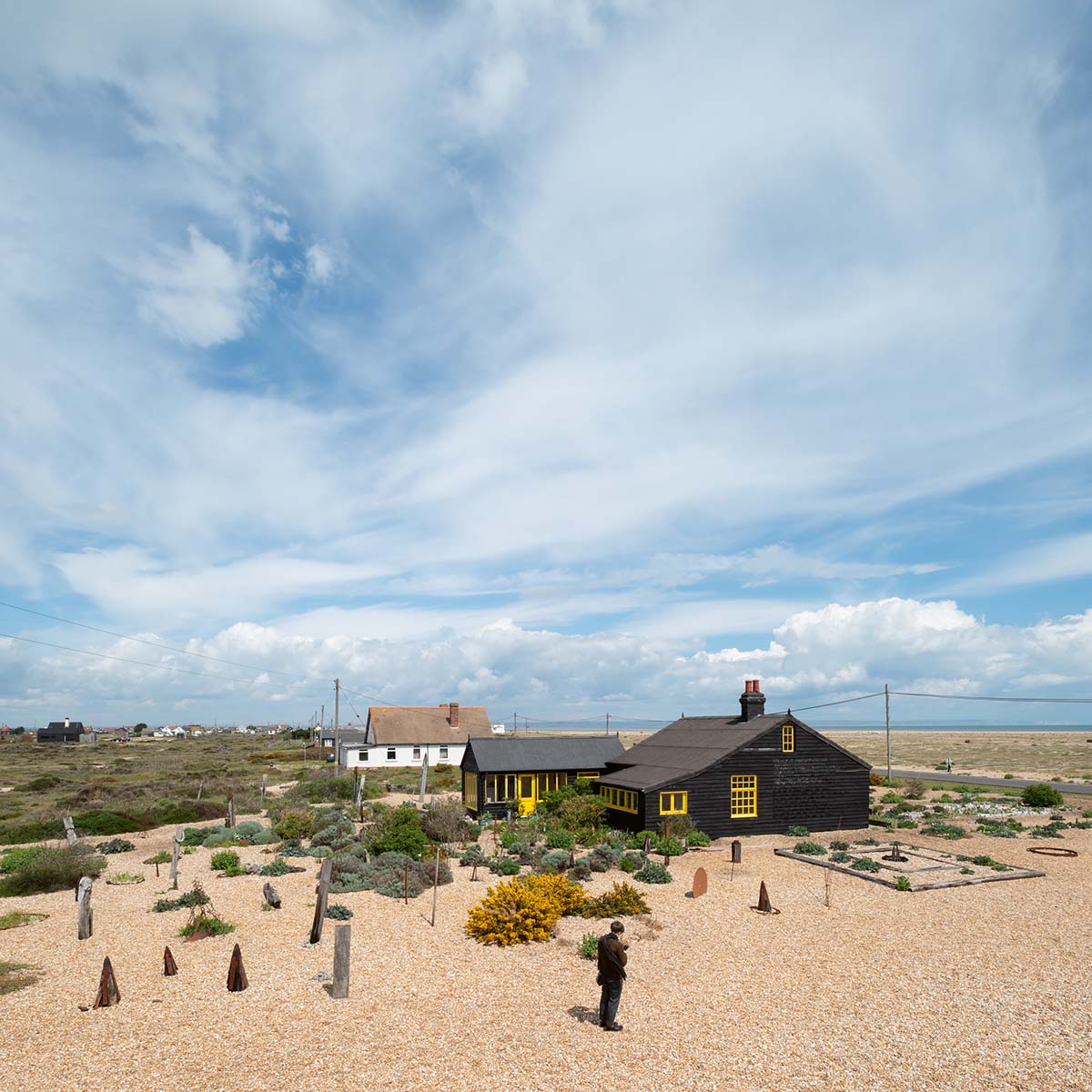
Gilbert avoided photographing the garden for a long time because it had been captured so many times before. “I thought, what could I possibly bring to this? But after realising that
the house and the garden are one grand arrangement, I knew I needed to get out there and join those dots. I think for many years it has been a story half-told.
“Dungeness is such a bizarre place. It’s so epic: the skies, the expanse of shingle, how things are given room to breathe because of all that open space. It’s like a theatre stage,
with characters popping up here and there. I think Jarman saw that, saw this incredible blank canvas that he could do something amazing with.”

Prospect Cottage: Derek Jarman’s House by Gilbert McCarragher (£25, Thames & Hudson)


